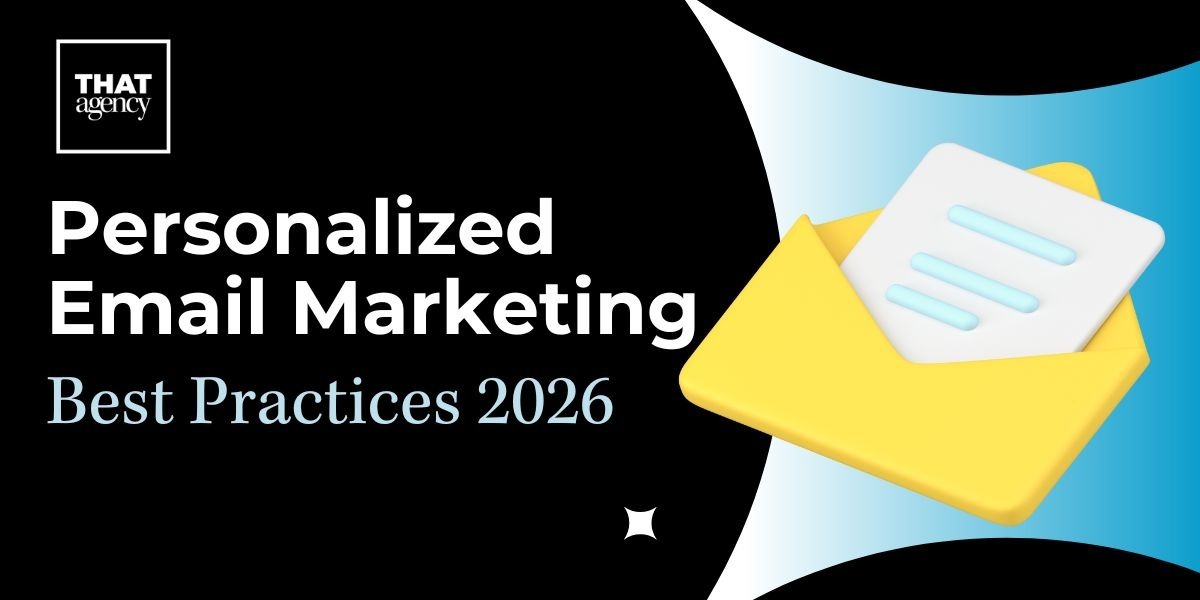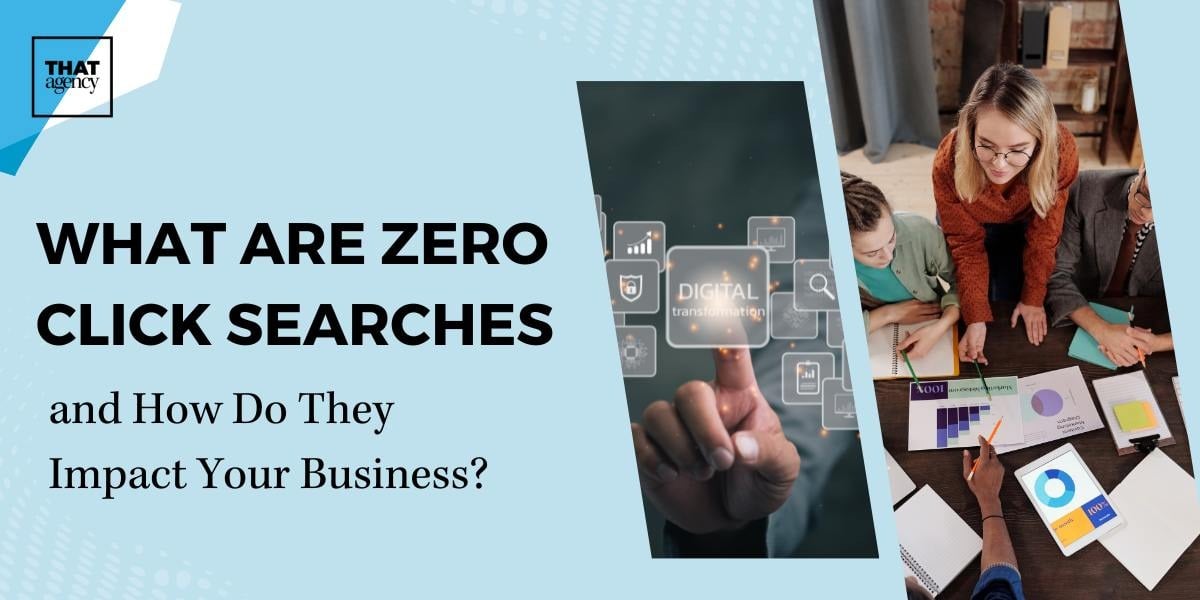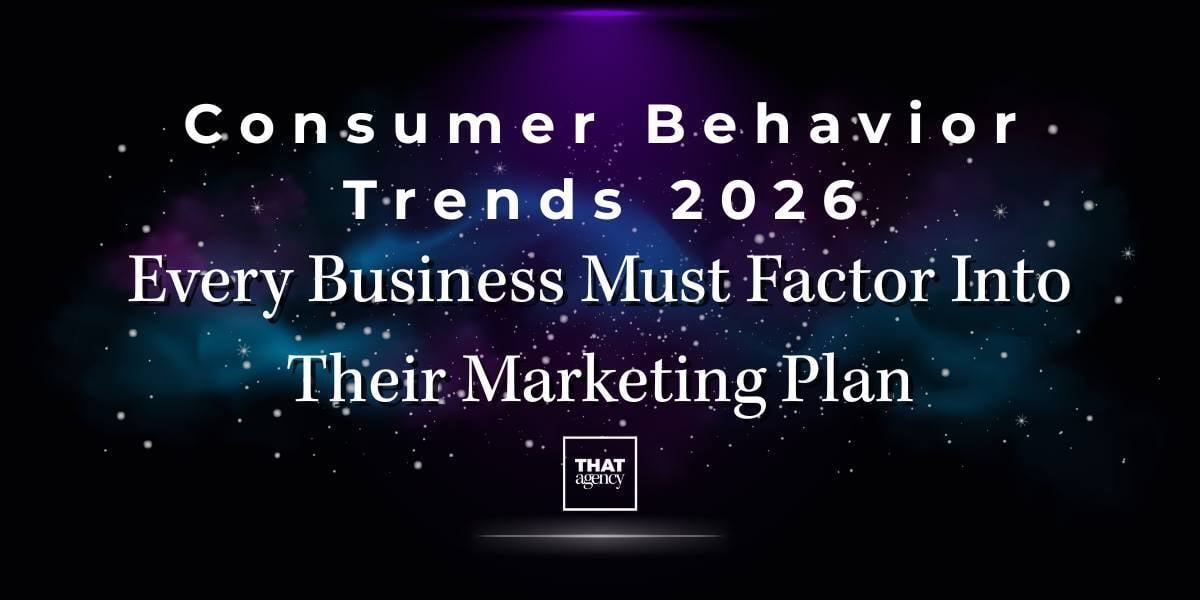Email marketing isn’t dead, it’s just changing. And if you’re still sending the same generic email to your whole list, you’re not just behind, you’re missing out.

In 2026, personalized email marketing is what separates the brands people ignore from the brands people trust. It's not just about using someone’s first name anymore. It's about sending messages that feel like they were written just for them, because they were.
Whether you're a small business trying to get more customers or a large brand looking to increase engagement, this guide will walk you through email personalization best practices that actually work today.
Why Personalized Email Marketing Still Rules in 2026
Here’s the thing, people are tired of getting emails that don’t feel like they’re meant for them. Generic messages that go out to everyone? They get ignored. Deleted. Or worse, marked as spam. That’s where personalized email marketing makes all the difference.
So, what is it exactly?
Personalized email marketing means you’re not treating your subscribers like one big group. Instead, you're creating emails based on what you actually know about each person, like what they’ve bought, where they live, what they’ve clicked on, or even how long they’ve been a customer. It’s a smarter, more respectful way to communicate.
And the numbers prove it works:
- Emails with personalized subject lines are 26% more likely to be opened. That means more people are actually seeing your message instead of skipping over it. (Source: Campaign Monitor)
- Personalized emails generate 6x more transactions. That’s not a small bump, it’s a major lift in sales. (Source: Experian)
- 80% of consumers say they’re more likely to buy from a brand that offers a personalized experience. They’re not just opening your emails, they’re shopping because of them. (Source: Epsilon)
Learn more about how personalization drives performance in marketing analytics 2025.
And it’s only growing. According to Email Broadcast, global email marketing revenue is projected to reach $17.9 billion by 2027, with personalization being one of the biggest reasons why. Brands that invest in getting personalization right now are setting themselves up for serious long-term success.
Quick Tip: Personalization isn’t just about adding a first name. It’s about showing your audience that you see them, and that you’re paying attention to what matters to them.
Why Is This So Effective?
Let’s break it down.
When someone gets an email that feels relevant to their life or their interests, they’re more likely to:
- Open it
- Click through
- Take action (like buy, sign up, or share)
That’s because personalized emails don’t feel like marketing, they feel like helpful reminders or recommendations from a brand they trust.
Compare that to a generic email that says, “Check out our new sale.” It’s vague. It’s impersonal. And it’s easy to ignore.
But an email that says, “Still interested in those trail running shoes? They’re back in stock, plus, here’s 10% off just for you”, now that feels personal. And that’s what gets results in 2026.
If you’re looking to create messaging that builds relationships, check out marketing strategy examples for inspiration.
Don’t Just Send More, Send Smarter
One of the biggest shifts we’re seeing is that brands aren’t trying to send more emails. They’re trying to send better ones. And better usually means more personalized.
So instead of sending one blast to 10,000 people, they’re sending 10 different versions to 1,000 people each, versions that are tailored to each group’s behavior, interests, or stage in the customer journey.
This strategy is:
- More effective
- Less annoying
- Easier to measure
And thanks to modern email marketing platforms (like Klaviyo, Mailchimp, and ActiveCampaign), doing this at scale is easier than ever. To take personalization even further, learn how Generative Engine Optimization (GEO) is shaping how AI-driven platforms deliver and prioritize marketing content.
Learn how to connect automation with personalization in AI integration in digital marketing.
What Businesses Should Know
If you’re a business owner or marketer, here’s what this means for you:
- If you’re not personalizing your emails, you’re losing attention and sales.
- If you’re only using a name tag in the subject line, you’re falling behind.
- If you’re using behavior, timing, and preferences to guide your emails, you’re ahead of the game.
In 2026, customers expect brands to “get” them. They want you to remember what they like, what they’ve bought, and what they might need next. And when you do that through email, you earn their trust, and their business.
Explore marketing effectiveness to see how personalized communication impacts ROI.
What Personalized Email Marketing Really Looks Like in 2026
Back in the day, email personalization meant putting someone’s first name in the subject line, like “Hey Jessica, check this out!” And while that still helps a little, it’s nowhere near enough in 2026.
Today, personalized email marketing is much smarter, more advanced, and way more effective. It’s about sending the right message, at the right time, to the right person, based on what they actually care about.
Let’s break down what that really means in today’s world, with real examples you can start using.
Behavior-Based Emails: Responding to What People Actually Do
This type of email is sent based on how someone interacts with your brand, on your website, in your store, or in past emails.
For example:
- Someone visits a product page but doesn’t buy? Send them a helpful follow-up with more info or a special offer.
- A customer adds something to their cart but leaves without checking out? Send a friendly reminder with a photo of the item.
- A subscriber hasn’t opened your last few emails? Send a “We Miss You” message with an incentive to re-engage.
These are called triggered emails, and they’re highly effective because they’re based on real behavior, not guesswork.
Did you know? Emails triggered by behavior have 70.5% higher open rates and 152% higher click-through rates than standard marketing emails. (Source: Campaign Monitor)
Pro Tip: You can set up these kinds of emails with automation tools like Klaviyo, ActiveCampaign, or Mailchimp. Once you set them up, they run on their own, and they work around the clock.
Dynamic Content: One Email, Different Experiences
Instead of sending 10 different emails to 10 different segments, you can now create one email with dynamic content blocks that change depending on who’s reading it.
Here’s what you can personalize inside a single email:
- Images: Show different product photos based on past shopping behavior.
- Headlines: Use different messaging depending on a person’s interests or industry.
- Offers: Show a loyalty discount to returning customers, and a welcome code to new ones.
- Location-Based Content: Mention a store near them or weather-based product tips.
This makes every email feel tailored, without creating a ton of extra work.
Let’s say you run a clothing store. A Florida customer might see a message like “Light linen for warm fall days,” while someone in Colorado gets “Layer up with cozy flannels.” Same email, but each feels more relevant.
Stat to Know: Dynamic content can increase click-through rates by up to 300%, according to Martech Advisor.
Combine this strategy with insights from b2b digital marketing strategies to improve engagement.
Send Time Optimization: Emails That Land at Just the Right Moment
Timing matters more than you might think. Sending an email at the wrong time, like when someone is asleep or busy, can mean it gets buried under everything else.
But in 2026, you don’t have to guess anymore.
Send time optimization uses machine learning to analyze:
- When each subscriber usually opens emails
- What time they tend to click on links
- When they’re most active during the day or week
Then your email gets sent automatically at that person’s ideal time, even if it’s different from everyone else on your list.
Let’s say Emily usually checks her email at 7:30 a.m. before work, and Marcus opens his around 9:15 p.m. while watching TV. With send time optimization, they’ll each get your email when they’re most likely to engage.
According to GetResponse, this kind of smart scheduling can improve open rates by up to 23%, without changing the content at all.
Quick Tip: Most modern platforms like Mailchimp, Constant Contact, and HubSpot include send-time optimization features. You just have to turn them on.
Smart scheduling is part of modern marketing automation—learn how AI improves delivery in AI marketing tools.
Bonus: Combining All Three for Maximum Impact
Here’s where the real magic happens, combining behavior-based emails, dynamic content, and smart send times into one powerful personalization strategy.
If you’re running a local business, you can even add localized marketing strategies to your emails, like showcasing nearby stores or local promotions.
Imagine this:
You run a local coffee subscription. A subscriber from Miami visits your page for cold brew kits but doesn’t buy. Two hours later, they get a personalized email featuring:
- A headline that says, “Still thinking about cold brew?”
- A product photo of the exact kit they looked at
- A message offering 10% off for first-timers
- The email lands right as they’re scrolling through their phone at lunch
That’s not just marketing, that’s marketing that feels like good timing, good service, and good instinct.
And it works.
So, What Makes This Different from Regular Email Marketing?
Great question. Here's a side-by-side:

The difference? One gets ignored. The other builds trust and drives real results.
Email Personalization Best Practices: What’s Actually Working in 2026
Want to get better results from your email marketing in 2026? Start with personalization that feels real, not robotic. The goal isn’t just to include someone’s name. It’s about making your emails feel like they were written for the person reading them. When done right, personalization builds trust, drives more clicks, and increases sales.
Below are the email personalization best practices that are actually working now, plus a few expert tips and some mistakes to avoid.
Learn how to manage data more effectively in our article about marketing analytics.
Organize Your Data Before You Personalize
If your data is a mess, your emails will be too.
Before you even think about personalizing emails, make sure your contact list is clean, current, and rich with useful details. Don’t just collect names and email addresses. Ask for:
- Location
- Birthday
- Interests or preferences
- Past purchases
- Communication preferences (like email frequency)
The more helpful data you collect, the better your emails will perform.
Helpful Tip: Add a short “preferences form” to your signup process. Let people choose what types of emails they want and how often they want to hear from you. This helps you build trust right away and gives you better info to work with.
Stat to Know: Companies that use clean, well-organized customer data see 20% higher ROI from their email campaigns (Salesforce).
Break Your List Into Smart Segments
One big list = one big mistake.
Instead of sending the same message to everyone, group your subscribers based on things like:
- First-time customers vs. long-time buyers
- People who opened your last few emails vs. those who didn’t
- Customers who prefer one product category over another
This is called segmentation, and it’s one of the most effective personalization strategies available.
Real Example: Let’s say you sell coffee. You can send one email to cold brew lovers and a different one to espresso drinkers. Even if both emails promote the same sale, the content feels more relevant, and relevance gets results.
Stat to Know: Marketers who use segmented campaigns see a 760% increase in revenue compared to one-size-fits-all email blasts. (Campaign Monitor)
See how segmentation fits into a full-funnel approach in marketing strategy examples.
Make Personalized Recommendations That Actually Make Sense
Have you ever gotten an email suggesting something you already bought? It’s annoying, and it makes the brand look like they’re not paying attention.
Good email personalization means offering helpful, timely suggestions, such as:
- Recommending items that go with what someone already bought
- Reminding customers to restock something they might be running low on
- Sharing content that matches their interests or what they’ve read on your site
The goal is to be helpful, not pushy.
Example:
“Running low on your favorite vitamin? Stock up now and save 15%.”
This feels more like a reminder from a helpful friend than a sales pitch.
Pro Tip: Use insights from conversion rate optimization to tailor offers and upsells that align with user intent.
Write Like a Real Person, Not a Robot
You’ve got data. You’ve got segments. Now it’s time to write emails that feel like a conversation, not a cold, corporate blast.
Use this tone:
- Friendly and casual (like talking to someone you know)
- Short sentences and simple words
- More “you” than “we”
- Ask questions, tell stories, or offer helpful tips
Example:
“Hey Jordan, saw you were eyeing our spring jackets. Want us to hold your size in the color you liked?”
That kind of message feels personal, not automated. It makes people want to open your emails, not ignore them. If you want your content to connect like a conversation, read content marketing strategy for tone and structure ideas.
Respect the Line Between Helpful and Creepy
Just because you can use personal data doesn’t mean you always should.
Here’s what works:
- Mentioning previous orders
- Recommending relevant products
- Referring to general location (like city or state)
Here’s what doesn’t:
- Mentioning exact times or places the person was browsing
- Using overly specific info that feels invasive
- Making it obvious that you’re tracking every click
Golden Rule: If your email makes someone stop and say, “How do they know that?”, you’ve gone too far.
New Trends in Personalized Email Marketing (2026 Edition)
If you want to stay ahead of the competition, keep an eye on these personalization trends that are changing the way emails are created and delivered:
Interactive Emails
Email is no longer static. In 2026, brands are using interactive features like:
- Click-to-reveal offers
- Live product carousels
- In-email quizzes and polls
These email trends reflect the same shift happening across social platforms—see 2026 social media trends to understand how cross-channel personalization is driving engagement everywhere.
Zero-Party Data Collection
Zero-party data is information that customers voluntarily give you, like through a quiz, a survey, or a preference center.
Why it matters:
- It’s accurate (because users provide it themselves)
- It’s privacy-friendly (especially important with changing data laws)
- It helps you personalize without being invasive
Example: A skincare brand asks: “What’s your skin type?” Then uses the answers to send targeted product recommendations.
AI-Powered Personalization
Artificial Intelligence is helping brands personalize at scale by doing things like:
- Choosing the best subject line for each contact
- Showing the right product recommendations
- Sending emails at the time each person is most likely to open
You don’t need a full tech team to do this, most modern platforms now offer AI features that are built in and easy to use.
For the bigger picture on AI’s role in 2026 marketing, visit the future of digital marketing.
Common Personalization Mistakes (and How to Avoid Them)
Even with the best tools, personalization can go wrong. Here’s what to watch for:
Using the wrong data: “Hi [First Name]” with a missing name? Total fail. Make sure your data fields are complete and tested.
Being too generic: If every subscriber gets the same “weekly newsletter,” that’s not personalization. Make use of your segments!
Going too far: Personalization should feel helpful, not creepy. If it feels like surveillance, it’s time to scale back.
Ignoring mobile users: More than 50% of emails are opened on smartphones. If your emails don’t look good on mobile, personalization won’t save them.
Personalization That Drives Real Results
When done right, email personalization builds trust, drives engagement, and boosts sales, especially when combined with AI marketing tools and automated segmentation. And best of all, it works for any type of business, from eCommerce brands to service providers, B2B to B2C.
You don’t need to send 10 different emails every week. You just need to send smarter emails that are:
- Timed well
- Written like a human
- Built around real data
And THAT Agency can help you do just that.
Ready to Send Emails That Actually Convert?
If you’re looking to boost open rates, drive more sales, and build stronger relationships with your audience, it’s time to upgrade your email strategy.
Click here to explore our email marketing services or contact THAT Agency to start building email campaigns that are smarter, not harder.




.jpg)